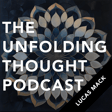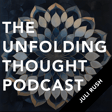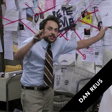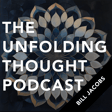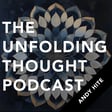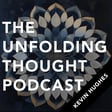
6–Immunity to Change X-ray – Business Meditation 2
In this second business meditation of the Unfolding Thought series, Eric Pratum introduces the Immunity to Change X-Ray, a framework developed by Robert Kegan and Lisa Lahey to uncover the hidden barriers preventing meaningful change.
The Immunity to Change framework reveals how unconscious fears and competing commitments hold us back, even when we’re motivated to improve. Through a guided exercise, you’ll explore your own commitments, uncover the big assumptions driving them, and learn how to test these beliefs to unlock progress.
Whether you’re a manager, parent, or someone striving to make lasting changes in your personal or professional life, this episode will help you take meaningful steps forward.
Mentioned in the Episode:
- The four steps of the Immunity to Change X-Ray: Commitment to Change, Identifying Competing Commitments, Exploring Big Assumptions, and Testing Assumptions.
- How unconscious fears and competing commitments block progress.
- Practical questions to help you uncover and challenge limiting beliefs.
Links:
- Learn more about the Immunity to Change X-Ray on Wikipedia: https://en.wikipedia.org/wiki/Immunity_to_Change
Start at the beginning of the series:
- On the website: https://unfoldingthought.com/unfolding-thought/
- YouTube Playlist: https://www.youtube.com/playlist?list=PL-WyDzPVJzUqWSGGIM0lSxqk4T-TBmsrQ
- Or by searching for Episode 4, titled Unfolding Thought, in your podcast platform of choice.
Visit the Unfolding Thought website: https://unfoldingthought.com/
Join the Conversation:
Have thoughts or questions about this episode? Reach out to Eric at eric@inboundandagile.com or connect on social media.



